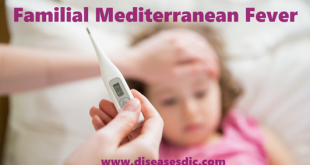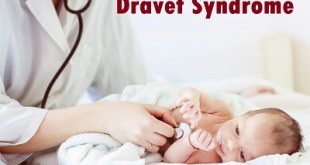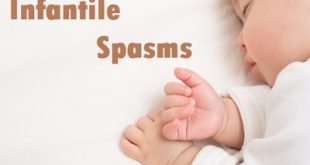What is febrile seizures?
A febrile seizure is a convulsion in a child that’s caused by a fever. The fever is often from an infection. Febrile seizures occur in young, healthy children who have normal development and haven’t had any neurological symptoms before.
It can be frightening when your child has a febrile seizure. Fortunately, it is usually harmless, only last a few minutes, and typically don’t indicate a serious health problem.
You can help by keeping your child safe during a febrile seizure and by offering comfort afterward. Call your doctor to have your child evaluated as soon as possible after a febrile seizure.
What types of febrile seizures are there?
Febrile seizures have been divided two groups, simple or complex.
Febrile seizures are considered “simple” if they meet all of the following criteria:
- Generalized full body convulsions
- Last less than 15 minutes
- No more than one in a 24-hour period
Febrile seizures are considered “complex or complicated” if any of the following features are present:
- Start focally with one body part moving independently of others
- Last more than 15 minutes
- Occur more than once in a 24-hour period
Pathophysiology
Febrile seizures occur in young children at a time in their development when the seizure threshold is low. This is a time when young children are susceptible to frequent childhood infections such as upper respiratory infection, otitis media, viral syndrome, and they respond with comparably higher temperatures.
Febrile seizures are divided into 2 types: simple febrile seizures (which are generalized, last < 15 min and do not recur within 24 h) and complex febrile seizures (which are prolonged, recur more than once in 24 h, or are focal). Complex febrile seizures may indicate a more serious disease process, such as meningitis, abscess, or encephalitis. Febrile status epilepticus, a severe type of complex febrile seizure, is defined as single seizure or series of seizures without interim recovery lasting at least 30 minutes.
Viral illnesses are the predominant cause of febrile seizures. It tend to occur in families. In a child with febrile seizure, the risk is 10% for the sibling and almost 50% for the sibling if a parent has febrile seizures as well. Although clear evidence exists for a genetic basis of febrile seizures, the mode of inheritance is unclear.
While polygenic inheritance is likely, a small number of families are identified with an autosomal dominant pattern of inheritance of febrile seizures, leading to the description of a “febrile seizure susceptibility trait” with an autosomal dominant pattern of inheritance with reduced penetrance. Although the exact molecular mechanisms of febrile seizures are yet to be understood, underlying mutations have been found in genes encoding the sodium channel and the gamma amino-butyric acid A receptor.
What causes febrile seizures?
Fever causes febrile seizures. It is most common during the first day of an illness as a child’s temperature rises. They’re most likely with a fever of at least 100.4 degrees Fahrenheit (38 degrees Celsius). In some cases, children will sometimes have a seizure before developing a fever.
Fevers from viral infections usually trigger febrile seizures. But the fevers may be due to any type of infection, including:
- Chickenpox.
- Coronavirus (COVID-19).
- Ear infections.
- Encephalitis.
- Influenza.
- Malaria (in regions where this condition is possible).
- Meningitis.
- Stomach flu (gastroenteritis).
- Strep throat.
- Tonsillitis.
- Upper respiratory infections.
(Note: Some childhood vaccinations may cause fever, and if a child has a febrile seizure after vaccination, it is the fever, not the vaccine itself, that causes the seizure.)
Risk factors
Factors that increase the risk of having a febrile seizure include:
- Young age. Most febrile seizures occur in children between 6 months and 5 years of age, with the greatest risk between 12 and 18 months of age.
- Family history. Some children inherit a family’s tendency to have seizures with a fever. Additionally, researchers have linked several genes to a susceptibility to febrile seizures.
Symptoms and signs
The symptoms of febrile seizures vary based on the two types:
Simple febrile seizures
Symptoms of simple febrile seizure are:
- Loss of consciousness
- Shaking limbs or convulsions (usually in a rhythmic pattern)
- Confusion or tiredness after the seizure
- No arm or leg weakness
It is the most common and last less than 2 minutes but can last as long as 15 minutes. It rarely happen more than once in a 24-hour period.
Complex febrile seizure
Symptoms of complex febrile seizure are:
- loss of consciousness
- shaking limbs or convulsions
- temporary weakness usually in one arm or leg
It last for more than 15 minutes. Multiple seizures may happen over a 30-minute period. They may happen more than once during a 24-hour time frame as well.
When a simple or complex febrile seizure occurs repeatedly, it’s considered a recurrent febrile seizure. Symptoms of recurrent febrile seizures include the following:
- Your child’s body temperature for the first seizure was lower.
- The next seizure happens within a year of the initial seizure.
- Your child has fevers frequently.
This type of seizure tends to occur in children under 15 months of age.
Complications of febrile seizures
- Febrile seizures have been linked to an increased risk of epilepsy.
- Many parents worry that if their child has one or more febrile seizures, they’ll develop epilepsy when they get older. Epilepsy is a condition where a person has repeated seizures without a fever.
- While it’s true that children who have a history of febrile seizures have an increased risk of developing epilepsy, it should be stressed that the risk is still small.
- It’s estimated that children with a history of simple febrile seizures have a 1 in 50 chance of developing epilepsy in later life.
- Children with a history of complex febrile seizures have a 1 in 20 chance of developing epilepsy in later life.
- People who have not had it have around a 1 to 2 in 100 chance of developing epilepsy.
Recurrence of febrile seizures
The most common complication is the possibility of more febrile seizures. The risk of recurrence is higher if:
- Your child’s first seizure resulted from a low-grade fever.
- The febrile seizure was the first sign of illness.
- An immediate family member has a history of febrile seizures.
- Your child was younger than 18 months at the time of the first febrile seizure.
Diagnosis of Febrile Seizures
- A doctor’s evaluation
- Sometimes a spinal tap, blood tests, or brain imaging
Because parents cannot tell whether children have a brain infection, children who have a fever and who have a seizure for the first time or are very sick should be taken to the emergency department immediately for evaluation.
Doctors examine the children and, depending on what they find, sometimes do tests to check for serious disorders that can cause seizures. These tests may include
- A spinal tap (lumbar puncture) with analysis of fluid from around the spinal cord (cerebrospinal fluid) to check for meningitis and encephalitis
- Blood tests to measure levels of sugar (glucose), calcium, magnesium, sodium, or other substances to check for metabolic disorders
- Cultures of blood and urine to check for infections
- Sometimes, imaging of the brain with magnetic resonance imaging (MRI) or computed tomography (CT) (if MRI is not available) may be done.
- Electroencephalography (EEG), which is a test that checks for abnormal electrical activity in the brain, may be done for children who have certain symptoms or who have repeat seizures.
What is the medical treatment?
Should the child come to the hospital with persistent seizure activity (what is termed status epilepticus), the following interventions will be undertaken in the emergency department:
Emergency treatment is begun to make sure the airway is open and oxygen intake is adequate. A monitor called a pulse oximeter will be used to measure oxygen content in the bloodstream. If additional oxygen is needed, a mask may be used.
If necessary, the airway may be opened by means of a jaw thrust, chin lift, or a device known as an oral airway. In some cases, it may be necessary to breathe for the child, either with the use of a bag and mask or by placement of a tube in the trachea (windpipe).
Additional interventions may be needed as a physical examination is performed.
- Placement of an IV line to obtain blood for testing and to administer medication to stop the seizure
- A rapid bedside test for blood sugar (glucose) to determine if it is low and if glucose needs to be given through the IV (low blood sugar can cause seizures)
- Measuring vital signs (temperature, pulse, respiratory rate, and blood pressure)
- Treatment to lower body temperature, if fever is present
Benzodiazepines, such as lorazepam (Ativan) or diazepam (Valium). Sometimes more than one dose or more than one type of medication is needed.
The medications used often cause sedation. Combined with the natural drowsy state after a seizure, the child may remain sleepy for quite some time afterward.
What can I do at home to treat this symptom?
You shouldn’t try to treat a first-time febrile seizure at home. A first-time it needs immediate medical care to make sure that it isn’t another kind of seizure or that it isn’t happening because of a severe infection like meningitis or encephalitis (both of which can be life-threatening).
If your child has a history of febrile seizures, your healthcare provider can guide you on what to do to treat these at home. In general, you should do the following:
- Stay calm. Seeing your child having a seizure can be very frightening, but it’s important for you to keep as calm as possible.
- Track the time. Note how long your child’s seizure lasts. If the seizure lasts five minutes or more and isn’t slowing down or stopping, you should immediately call 911 (or your local emergency services number).
- Slowly and gently set your child down on the floor. Don’t set a child on a table or bed (they could fall), and don’t try to hold them in your arms or hold them down (that increases the risk of an injury).
- Place them in the rescue position. Lay your child on their left side with their lower arm stretched straight out, so it’s like a cushion for their head. This helps prevent choking from fluid (saliva or vomit) going into their lungs.
- Don’t put anything in their mouth. That could result in an injury for your child or you.
Prevention
Most febrile seizures occur in the first few hours of a fever, during the initial rise in body temperature.
Giving your child medications
Giving your child infants’ or children’s acetaminophen (Tylenol, others) or ibuprofen (Advil, Motrin, others) at the beginning of a fever may make your child more comfortable, but it won’t prevent a seizure.
Use caution when giving aspirin to children or teenagers. Though aspirin is approved for use in children older than age 3, children and teenagers recovering from chickenpox or flu-like symptoms should never take aspirin. This is because aspirin has been linked to Reye’s syndrome, a rare but potentially life-threatening condition, in such children.
Prescription prevention medications
Rarely, prescription anticonvulsant medications are used to try to prevent febrile seizures. However, these medications can have serious side effects that may outweigh any possible benefit.
Rectal diazepam (Diastat) or nasal midazolam might be prescribed to be used as needed for children who are prone to long febrile seizures. These medications are typically used to treat seizures that last longer than five minutes or if the child has more than one seizure within 24 hours. They are not typically used to prevent febrile seizures.
 Diseases Treatments Dictionary This is complete solution to read all diseases treatments Which covers Prevention, Causes, Symptoms, Medical Terms, Drugs, Prescription, Natural Remedies with cures and Treatments. Most of the common diseases were listed in names, split with categories.
Diseases Treatments Dictionary This is complete solution to read all diseases treatments Which covers Prevention, Causes, Symptoms, Medical Terms, Drugs, Prescription, Natural Remedies with cures and Treatments. Most of the common diseases were listed in names, split with categories.







